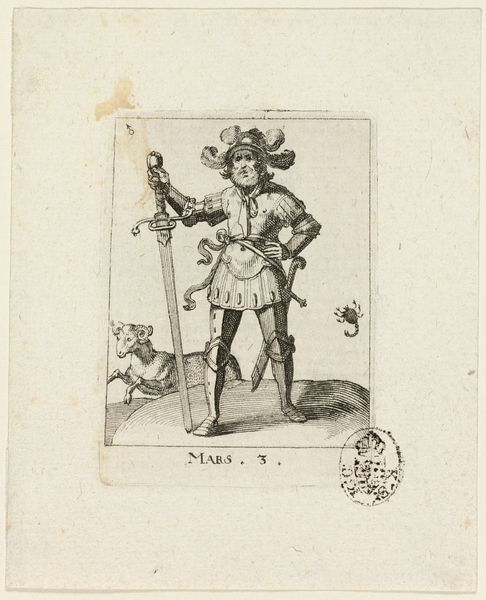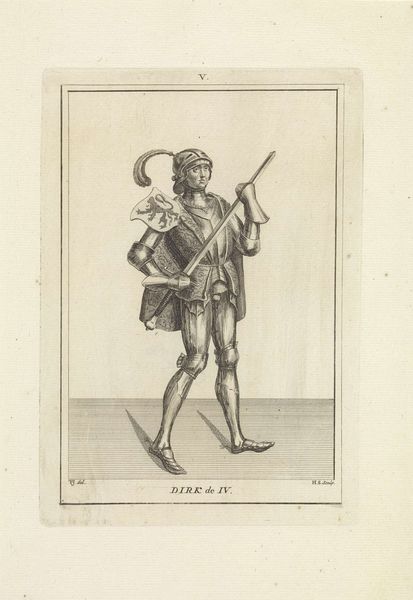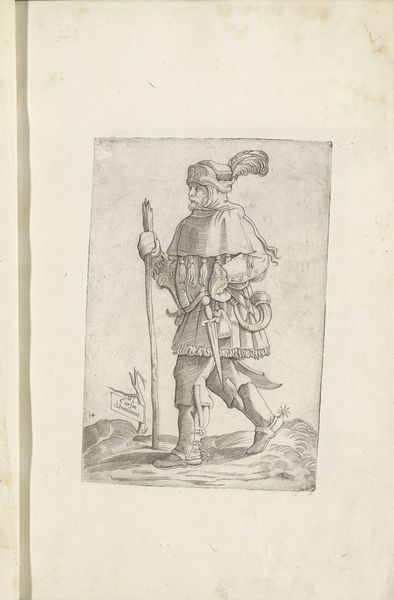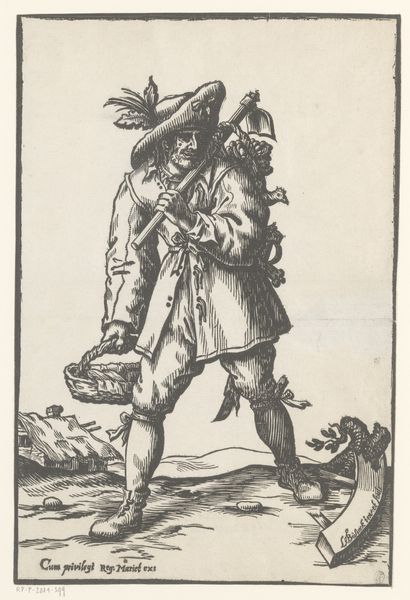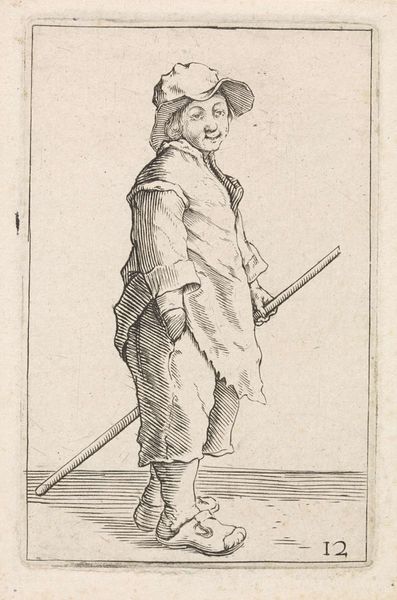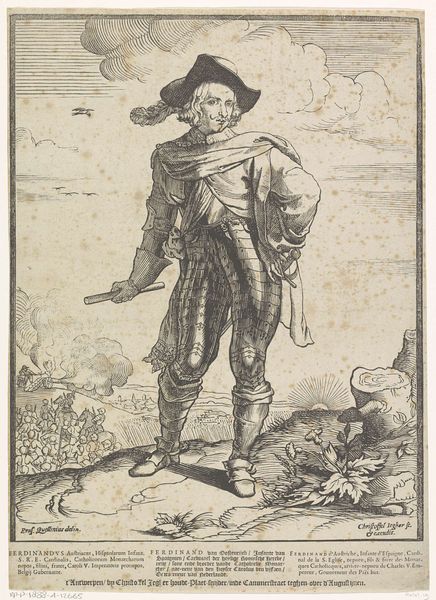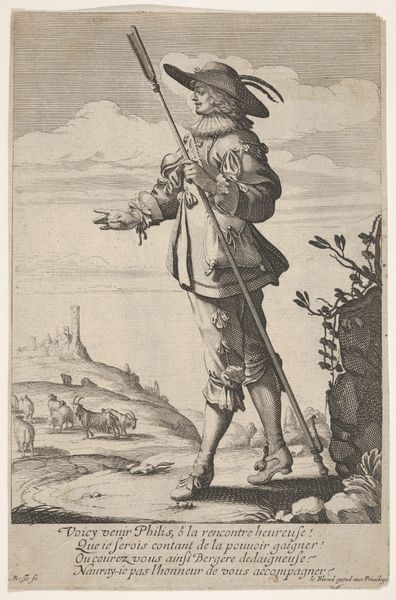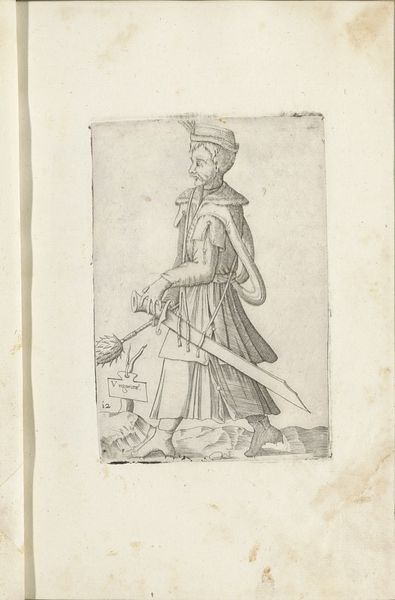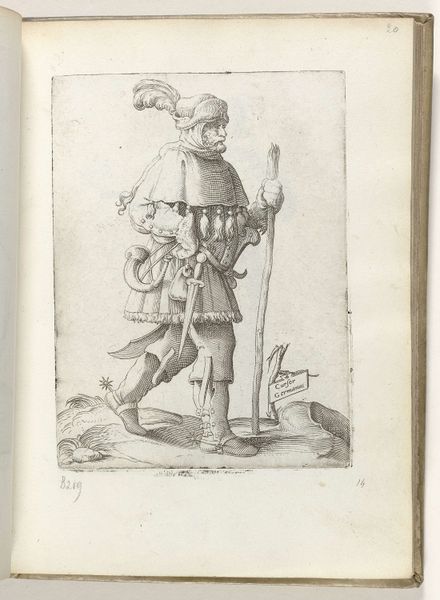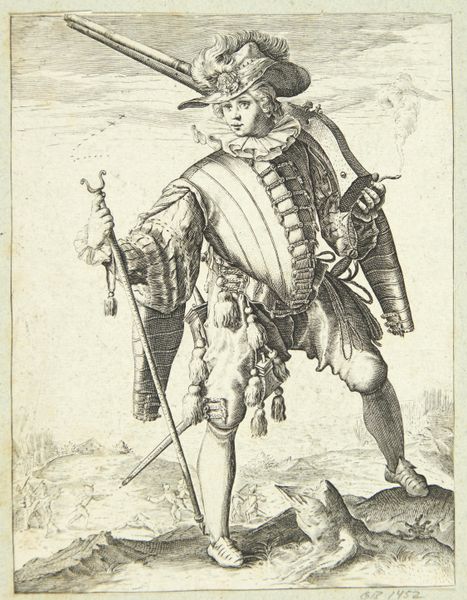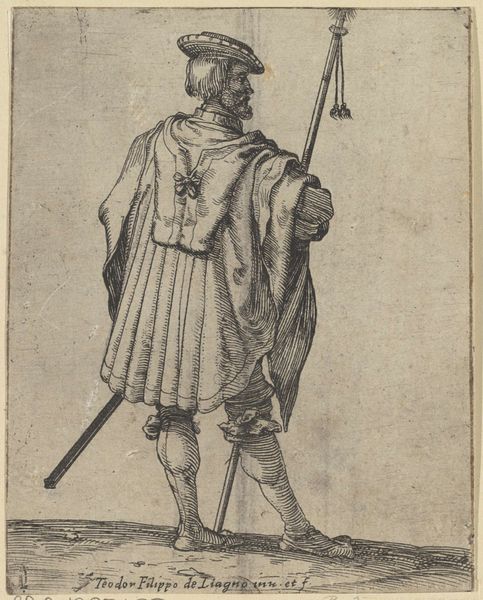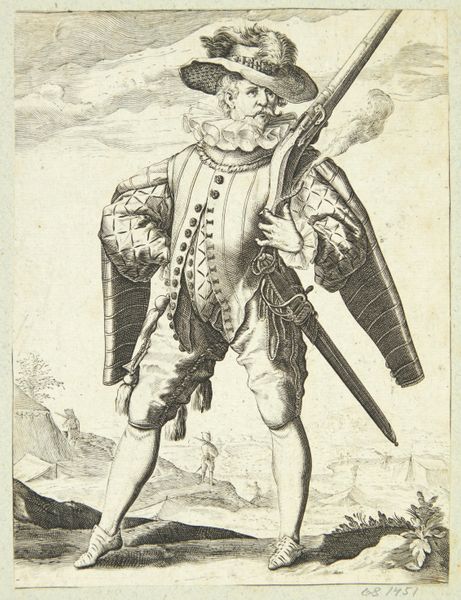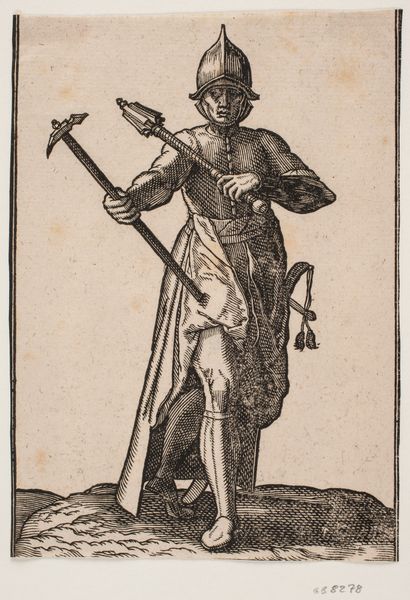
drawing, print, etching, paper
#
drawing
#
allegory
# print
#
etching
#
figuration
#
paper
#
ancient-mediterranean
#
history-painting
Dimensions: 69 × 49 mm (sheet)
Copyright: Public Domain
Curator: I'm immediately struck by the confident pose in this piece, an etching entitled "Jupiter, plate two from Der VII Planeten". Editor: Yes, there's a clear sense of power emanating from the figure of Jupiter. He seems a bit out of scale compared to the figures at his feet. Who is the artist? Curator: The artist is Conrad Meyer. Although undated, its style certainly references ancient symbolism. The print depicts Jupiter standing on clouds, armed with what looks to be a spear. Fish encircle him, and what appears to be a centaur aims an arrow from below. Editor: Those fishes evoke themes of abundance and fertility, linked to Jupiter’s role as a benevolent provider. And is that a visual reference to Sagittarius there, through the figure of the centaur archer? There's also an assertive king-like posture to be appreciated. It gives us the archetype, no? Curator: I appreciate your reading. In light of the broader historical moment, these could act as visual rhetoric asserting divine right—essential in periods of social and political upheaval, when rulers need to project power and stability, which very well might be what the artist was attempting to project. How are masculinity, rulership, and cosmic order visualized in this system of representation? Editor: Definitely. And his relaxed hand on the sword almost mocks the potential use of it. So how can we interpret his crown? This relates Jupiter to the gods of Rome? It is asserting a claim about a ruler or Emperor and his qualities, correct? Curator: Absolutely. The imagery constructs the emperor's authority—drawing from familiar symbols to make it legible and seemingly natural. We must look to broader cultural understandings to appreciate its effect. Editor: Fascinating. Looking closely, each element weaves Jupiter into a story of both earthly power and celestial importance, a compelling image for the ages. Curator: Indeed, it makes one consider how these symbols continue to influence our perceptions of power even today. It urges a further consideration on why those symbols are considered powerful in the first place.
Comments
No comments
Be the first to comment and join the conversation on the ultimate creative platform.
